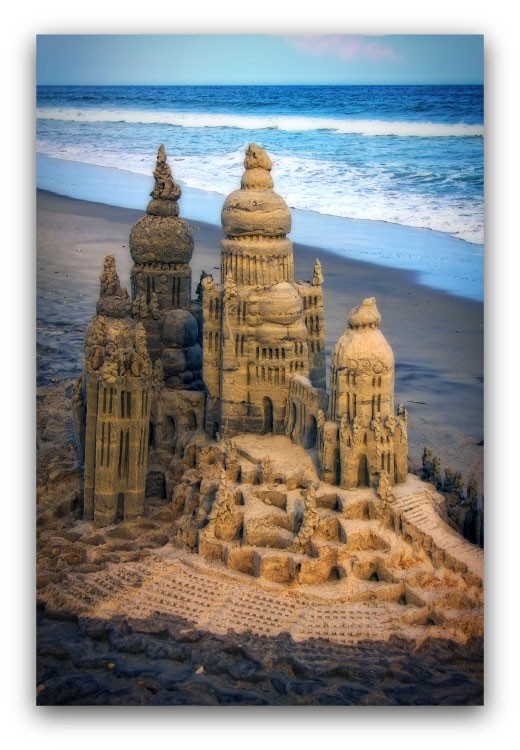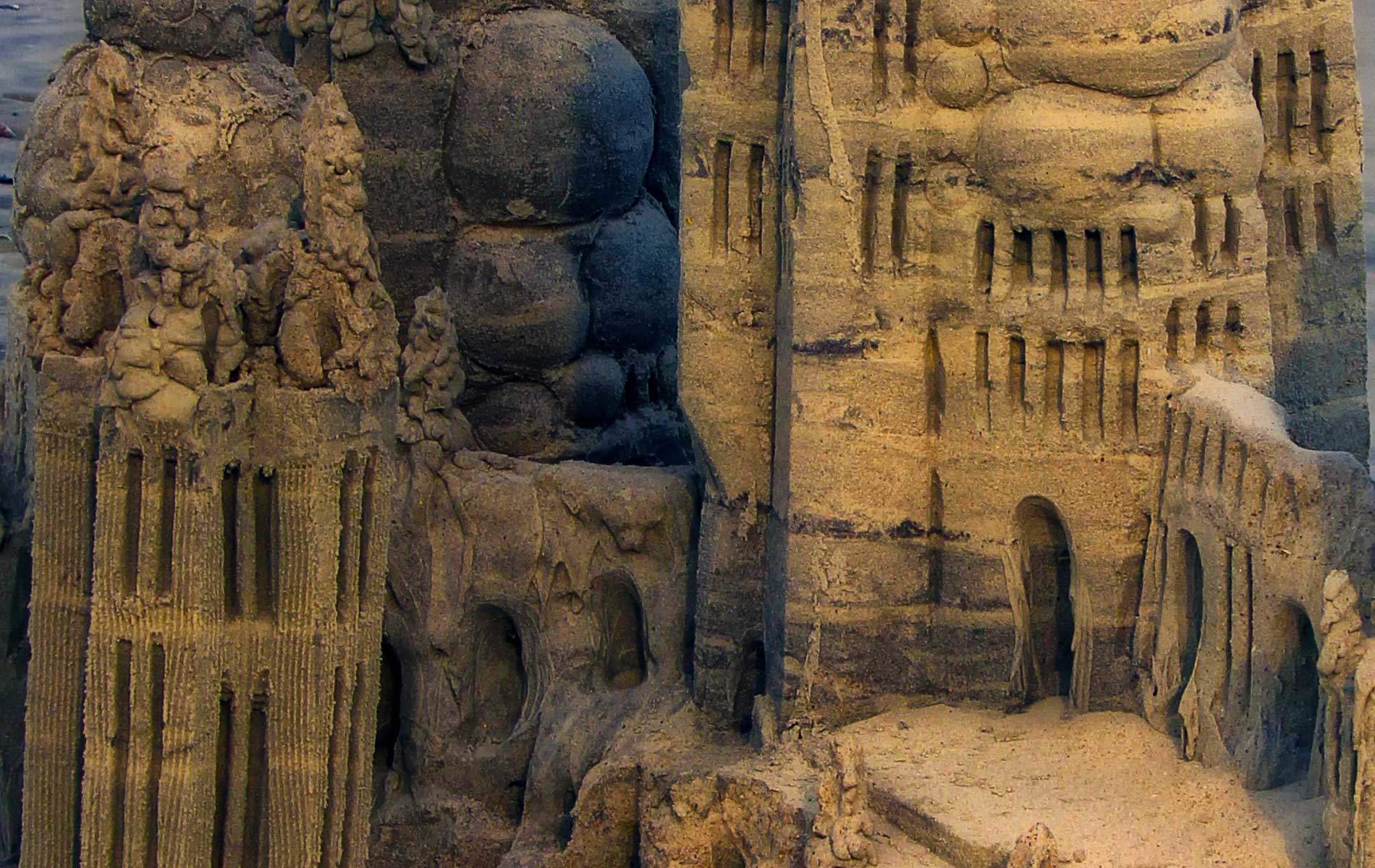Yes, this is a frequently asked question. And, while it may seem obvious, it reflects an understanding of the different types of sand used to make sandcastles.
Most professional sandcastles are made with quarry sand which is imported to the castle site. It is more uniform and is mostly silica (quartz) which has a crystalline geometry that helps lock the sand together once compacted. It may also have some silt or clay which makes for slower drying and cleaner carving.
The castles on this site were made with the sand on the beach. But it’s not that simple. Beach sand also has shells (calcium carbonate) along with the silica sand and the ratio of one to the other is always changing.
These castles are built at the average high tide line on the beach. This means the sand changes twice a day with each high tide. There are a number of reasons why I build the castles at the tide line and I will explain them in a future post.
The image at the top is a detail shot from the image below (‘Sentinel’ is available as an aluminum print). This is a two day castle. The tower on the right was built on day one and the sand is mostly light with a few streaks of darker sand. The tower on the left was built on the second day and you can see just how much the sand changed with the overnight high tide.
The ratio of sand and shells also changes both horizontally across the surface of the beach and vertically in the layers of sand you find when you start to dig. The more shells there are the more you run into problems. The sand will not compact as well, it will dry out more quickly and it will be challenging to carve. With enough experience you can tell whether the sand will work just by listening to the sound the shovel makes when it engages the sand.
Imagine the looks you get when you’re constantly sticking the shovel in the sand only to dump it out off to the side. Or when you’re hauling buckets of sand from a section of the beach several yards away from where you’re building the castle. Or, you’re only taking the top two or three inches of sand from the surrounding area.
So “Where do you get your sand?” isn’t such a simple question after all.


